World
Understanding India's Nuclear Liability Law
Saurav Jha
Jan 29, 2015, 11:30 AM | Updated Feb 19, 2016, 05:58 PM IST
Save & read from anywhere!
Bookmark stories for easy access on any device or the Swarajya app.
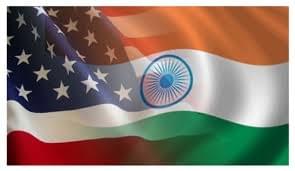
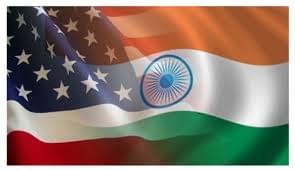
The ‘nuclear breakthrough’ announced during the Obama visit is actually the culmination of a process that began soon after Modi’s own visit to the United States (US) last September. That is when (i.e September 2014) a bilateral ‘contact group’ was set up to hammer out issues related to operationalizing the India-US 123 civil nuclear agreement (IUCNA) signed in 2008. The Indian agenda was to get the Americans to finally agree on the ‘administrative arrangements’ needed to kick start bilateral cooperation under the aegis of IUCNA without conceding any intrusive inspection demands by the latter. The US in turn was looking for credible workaround offers from the Indians on the supplier liability aspects of India’s Civil Liability for Nuclear Damage (CNLD) Act 2010 before they quit stalling on the administrative arrangements part by insisting on having the right to ‘track’ any US origin material or fuel being used by India’s nuclear establishments.
That is now past, with the US side having agreed to administrative arrangements similar to what India has with Canada i.e sans any tracking clause, as a thinly veiled quid pro quo for India’s offer to build a nuclear insurance pool that will provide cover to suppliers against third party liability at extra cost to India and effective dilution of the supposed deterrent benefit of bringing suppliers into the liability ambit. Moreover while this development in principle clears the way for the import of US origin nuclear technology, much remains to be done, not the least of which is an India-Japan civil nuclear deal before any such reactor actually gets built in India, affordably.
Section 104 (d)(5) of the 2006 US Congressional Hyde Act which was needed to pave the way for IUCNA requires the US President to ‘ensure that all appropriate measures are taken to maintain accountability with respect to nuclear materials, equipment, and technology sold, leased, exported, or re-exported to India’ . Till the recent breakthrough this was being used by the Americans to push for a ‘tracking’ clause as part of administrative arrangements. Obama has however now waived that requirement through Presidential decree thereby accepting India’s argument that its ‘Additional Protocol’ related arrangements with the International Atomic Energy Agency(IAEA) for inspections are intrusive enough and additional national tracking by America was both unnecessary and excessive.
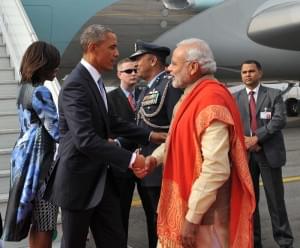
What is more interesting however is the fact that the US has accepted that India’s CNLD ‘is compliant with the 1997 Convention on Supplementary Compensation (CSC), which is being pushed by the Americans globally to serve as a successor to current international liability regimes based on the Paris and Vienna conventions. CSC incidentally had been signed by India in 2010 itself pursuant to obligations under IUCNA but has not yet been ratified by it. Till recently, US suppliers were pointing out that CNLD does not exclusively channelize liability to the operator as is the central principle enshrined in CSC or any of its predecessors and that they are waiting for India to actually ratify CSC before doing business with it. Basically they were implying that India would not be able to ratify CSC without amending out the right to recourse from CNLD which extends liability to suppliers. India was instead pointing out that CSC allows signatories to make reservations to certain provisions in the treaty. Clause 17(b) of CNLD which allows the operator to have legal recourse to the supplier for up to 80 years after the plant commences operation if in the opinion of an Indian court the ‘nuclear incident has resulted as a consequence of an act of supplier or his employee, which includes supply of equipment or material with patent or latent defects or sub-standard services’ therefore did not come in the way of it being CSC compliant. Today this position seems to have been accepted by the Americans.
So what has changed? Money obviously, or rather it could change hands from suppliers to Indian insurance companies and back again to suppliers from Indian consumers via operators through a higher cost of power, absent subsidies provided by the government. India is moving to set up a nuclear insurance pool which in addition to the usual mix of insurers, operators and governments will also include suppliers for third party liability cover unlike any other nuclear risk pooling mechanism in the world. As long as 17(b) exists both foreign and domestic suppliers will perceive that liability extends to them as well and therefore would need insurance cover if they were to participate in India’s nuclear program at all.
Now 17(b) by itself actually does not define any limit to the amount of recourse the operator could seek from a supplier, which according to suppliers basically opens them up to unlimited liability. Since unlimited liability is not something that anybody would be able to insure, in exercise of powers conferred under section 48 CNLD, the Department of Atomic Energy (DAE) published the Civil Liability for Nuclear Damage Rules, 2011 wherein Rule 24 delineated that claims by plant operators against component suppliers ‘shall in no case exceed the actual amount of compensation’ paid by utilities themselves which as per CNLD is limited to Rs 1500 crores at the moment. DAE has also undertaken a probabilistic safety analysis to identify a model that will assess probabilities of particular equipment or a set of system to fail in a manner that can lead to an accident. Based on the study there would be a rational basis for working out an actuarial approval to decide on the quantum of liability applicable to individual suppliers. This is intended specifically to reassure small suppliers who simply would not be in a position to take out insurance for anything very modest amounts.
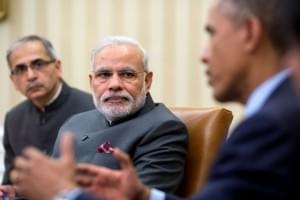
Foreign suppliers till recently were even sceptical of Rule 24 since it was a mere supplement to statutory law that seemed to suggest unlimited right of recourse for the operator vis a vis suppliers. However it is the Russians who bit the bullet the first, agreeing to the proposed Indian risk pooling mechanism that will include suppliers provided they were allowed to recover their insurance costs via a mark up on supplies for Kudankulam 3 & 4 as well as the 12 additional Russian origin reactors that are likely to be built in India as agreed upon during Putin’s talks with Modi last December.
Indeed, the Russian willingness to work under India’s liability framework has both shown America a way forward as well made it much more amenable to kickstarting nuclear cooperation under the deal, ergo the Obama-Modi breakthrough. However it remains to be seen if India’s proposed insurance pool will get reinsurance from foreign insurance companies or other global pools given that India has completely ruled out on-site inspections by insurers. Incidentally IUCNA also includes provisions for sharing of best practices between US and Indian nuclear risk pools. Nevertheless If foreign insurers stay away on account of not being able to undertake inspections it will actually be the Indian government which will provide re-insurance and this is something the Russians have been demanding.
In any case even with four government insurance companies pooling their resources, only Rs 750 crores of Rs 1500 crores can be insured by them since they can pledge only up to 3 per cent of their net worth as per global norms for this pool. Insurance for the remaining Rs 750 crores may have to be taken out by NPCIL, India’s only nuclear operator at the moment or financed via a sovereign guarantee extended by the Government of India. Guarantees probably are also being made to assuage foreign suppliers that Section 46 of CNLD stays limited to criminal liability and does not extend to unlimited civil liability via application of the law of torts. However such guarantees on Section 46 will probably have to backed up by an amendment to CNLD in the future.
Overall the chief impact of the American acceptance of CNLD is that the capital cost of any American origin reactor design being built in India will only rise and with it will rise the cost of delivered power. As it is American reactor suppliers are not really exclusively American. In fact Toshiba-Westinghouse is more Japanese given that Toshiba own 77 percent of Westinghouse. The other big American player GE-Hitachi is also 50 percent owned by Hitachi. Any move to build their reactors in India will require an India-Japan nuclear deal with its own set of administrative arrangements given that key components for these reactors require export clearances from Japan. Essentially Washington will lean on Tokyo for this since the latter has its own tracking clause demands which India will not accept.
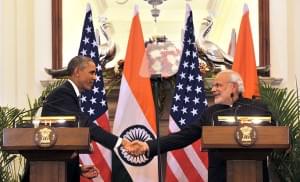
More importantly without an India-Japan nuclear deal, a number of component manufacture joint ventures(JVs) between Indian majors and Western and Japanese suppliers that are lying moribund at the moment cannot be activated. These JVs are absolutely crucial to bringing down the overnight cost of say Toshiba-Westinghouse’s 1000 MWe AP-1000 Pressurized Water Reactor (PWR) which according to some estimates may cost up to $ 5 billion dollars to build in India. Indeed the projected cost of delivered power from an Indian AP-1000 may be in the Rs 12 per kilowatt hour range at the moment.
Contrast this with China which has already indigenized almost the entire AP-1000 value chain including the reactor pressure vessel and is building them at a cost which is half that of what is being projected for India. China is now even beginning to market the CAP-1400 which is an up rated design based on the AP-1000 developed by it in partnership with Toshiba Westinghouse. Truth be told, China’s simple liability regime introduced way back in 1986 with no provision for supplier liability coupled with its mammoth nuclear build plans has allowed it to corner a very large share of the worldwide nuclear industry for light water reactors such as the AP-1000. China today is on course to deploy 60 Gigawatt-electric (GWe) of nuclear capacity by 2020 and double that by 2030. It is this gargantuan build plan which is giving it the confidence to declare peak emissions by 2030 as part of the recent climate change agreement with the US.
If India too has to commit to any such peak, it will have to move quicker to augment nuclear capacity. A nuclear push is the best way to reconcile ‘Make in India’ with larger climate change goals, and nuclear manufacturing itself can be a significant part of ‘Make in India’. Moreover if the liability work around offered to America does pave the way for early inclusion of India in the Nuclear Supplier’s Group (China’s reservations notwithstanding) as is being promised by Washington, India could well emerge as a major exporter of nuclear energy related equipment both domestically developed or produced under foreign collaboration. Modi certainly will have his sights set on that one.
Saurav Jha is an author and commentator on energy and security affairs. His first book, The Upside Down Book of Nuclear Power (HarperCollins India) was released to critical acclaim in 2010.





